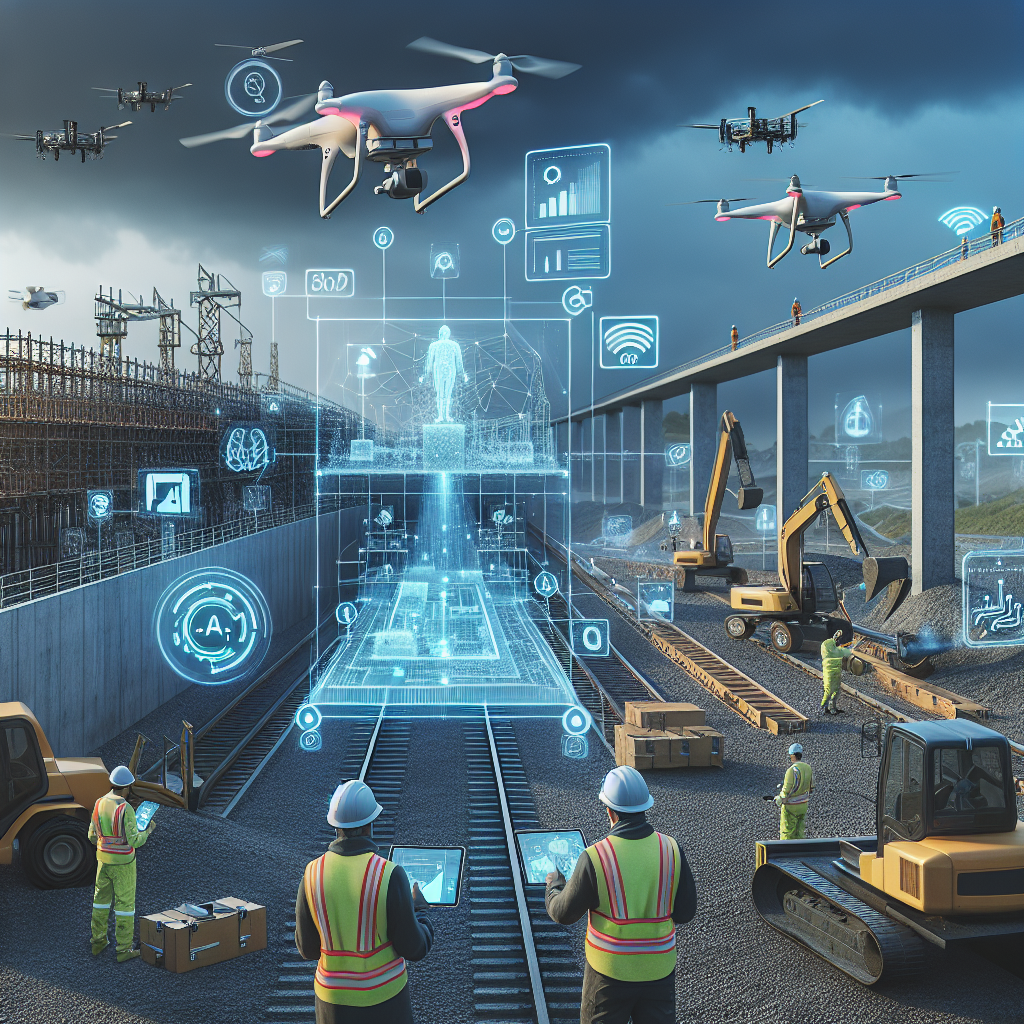Artificial intelligence (AI) has made significant advancements in recent years, revolutionizing various industries. One area where AI is increasingly being utilized is in public works, specifically in enhancing infrastructure maintenance and repair. With the help of AI technologies, government agencies and municipalities can improve the efficiency, accuracy, and cost-effectiveness of their infrastructure management practices.
AI in Public Works: How It Works
AI technology can be applied to a wide range of infrastructure maintenance and repair tasks, including road and bridge inspections, water and sewer system monitoring, and building maintenance. By using machine learning algorithms and computer vision systems, AI can analyze large amounts of data and identify patterns and trends that human inspectors may miss. This enables public works departments to prioritize maintenance and repair activities more effectively, leading to improved infrastructure reliability and longevity.
For example, AI-powered drones can be used to inspect bridges and other structures, capturing high-resolution images and videos that are then analyzed by AI algorithms to detect signs of damage or deterioration. This allows engineers to identify potential issues early on and take corrective action before they escalate into more serious problems. Similarly, AI can be used to monitor water and sewer systems in real-time, detecting leaks and other issues before they become major disruptions.
Benefits of AI in Public Works
There are several key benefits of using AI in public works to enhance infrastructure maintenance and repair:
1. Improved efficiency: AI technologies can process and analyze data much faster than humans, enabling public works departments to identify and address infrastructure issues more quickly. This can help reduce downtime and minimize disruptions to the public.
2. Enhanced accuracy: AI algorithms can detect subtle signs of damage or deterioration that may go unnoticed by human inspectors. This can help prevent costly infrastructure failures and extend the lifespan of public assets.
3. Cost savings: By prioritizing maintenance and repair activities based on AI-generated insights, public works departments can optimize their budgets and allocate resources more effectively. This can help reduce overall maintenance costs and improve the return on investment in infrastructure.
4. Increased safety: AI-powered drones and other autonomous systems can be used to inspect infrastructure in hazardous or hard-to-reach locations, reducing the risk of injury to human inspectors. This can improve worker safety and minimize the potential for accidents on the job.
5. Predictive maintenance: AI can analyze historical data and predict when infrastructure components are likely to fail, enabling public works departments to proactively address issues before they become critical. This can help prevent costly emergency repairs and reduce the overall maintenance backlog.
FAQs about AI in Public Works
Q: How does AI technology improve infrastructure maintenance and repair processes?
A: AI technologies can analyze large amounts of data and identify patterns and trends that human inspectors may miss. This enables public works departments to prioritize maintenance and repair activities more effectively, leading to improved infrastructure reliability and longevity.
Q: What are some examples of AI applications in public works?
A: AI-powered drones can be used to inspect bridges and other structures, AI algorithms can monitor water and sewer systems in real-time, and predictive maintenance systems can forecast when infrastructure components are likely to fail.
Q: How can AI help public works departments save costs?
A: By prioritizing maintenance and repair activities based on AI-generated insights, public works departments can optimize their budgets and allocate resources more effectively. This can help reduce overall maintenance costs and improve the return on investment in infrastructure.
Q: Is AI technology safe to use in public works?
A: AI-powered drones and other autonomous systems can be used to inspect infrastructure in hazardous or hard-to-reach locations, reducing the risk of injury to human inspectors. This can improve worker safety and minimize the potential for accidents on the job.
In conclusion, AI technology has the potential to transform public works infrastructure maintenance and repair practices, improving efficiency, accuracy, and cost-effectiveness. By leveraging AI-powered tools and systems, government agencies and municipalities can enhance the reliability and longevity of their infrastructure assets, ultimately benefiting the communities they serve. As AI continues to evolve and become more advanced, its role in public works is only expected to grow, leading to safer, more resilient, and more sustainable infrastructure systems for the future.

